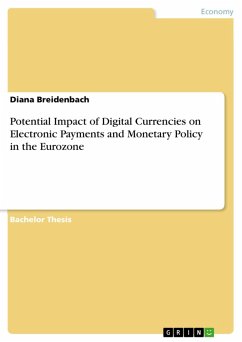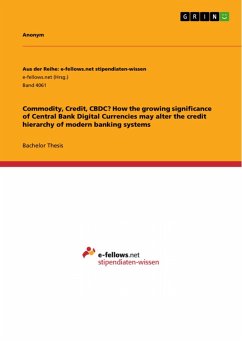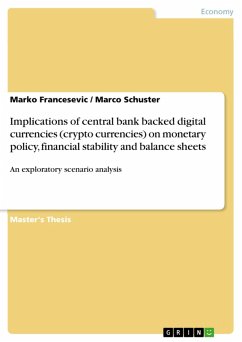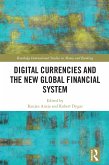Bachelor Thesis from the year 2021 in the subject Economics - Finance, grade: 1,0, , language: English, abstract: As we move forward, incidents such as the Covid-19 pandemic demonstrate the importance of having access to multiple means of payment. With the growth of digital payment options, the topic of e-money and its economic impact has increasingly come into academic focus. The aim of this bachelor thesis is therefore to summarize the current state of research on digital currencies and to provide new insights into their impact on payments and monetary policy. This study concentrates mainly on the European market with a particular emphasis on the Eurozone. Using recent literature and academic studies, a literature review examines the impact of digital currencies on monetary policy. Further, this paper develops and demonstrates new insights about digital currencies in a quantitative empirical study. The quantitative analysis was chosen in order to obtain measurable values for comparison. From this, the following research question can be derived: How could digital currencies potentially impact electronic payments and monetary policy in the Eurozone? Following the introduction, chapter two provides the reader with a comprehensive and in-depth examination of theoretical foundations. To this end, the terms currency and money are clarified, and different payment systems are discussed. In addition, business models based on companies are presented, as well as monetary policy and the ECB are explained in more detail. After the theory section, the third chapter covers the approach, the empirical method, and the data collection and analysis procedures. Subsequently, chapter four presents the research results to provide an answer to the research question. The fifth chapter deals with the discussion, including hypothesis testing. The final section completes the thesis with a conclusion.
Dieser Download kann aus rechtlichen Gründen nur mit Rechnungsadresse in A, B, BG, CY, CZ, D, DK, EW, E, FIN, F, GR, HR, H, IRL, I, LT, L, LR, M, NL, PL, P, R, S, SLO, SK ausgeliefert werden.
Hinweis: Dieser Artikel kann nur an eine deutsche Lieferadresse ausgeliefert werden.









